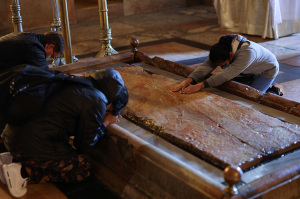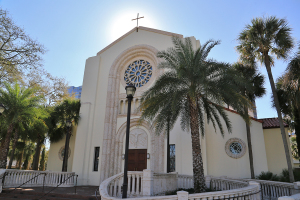Finding a Delightful and Unusually Named Church on the Road Less Traveled

Driving the back roads on my way from the quaint Suffolk village of Lavenham to Norwich in the neighboring English county of Norfolk I came across a small and rather unusual countryside church.
I wouldn't have stopped in tiny Shelland (population 100 or less for most of the last 340 years) had it not been for the dedication of the parish church, the Church of King Charles the Martyr.
King Charles the Martyr is better known as Charles I, the English monarch beheaded in 1649 during the English Civil War. Just how unusual is the dedication? Only six churches contemporary to the 17th century in the entire Church of England have this dedication, according to a listing kept by the Society of King Charles the Martyr.
What makes it even more unusual, at least historically speaking, is the fact that Suffolk wasn't a county whose sympathy was with the royalists, as Charles I's forces in the English Civil War were called.
The Shelland parish was given its King Charles the Martyr dedication during the interregnum — the period between Charles I's execution and the restoration of the monarchy — by Thomas Cropley, the local squire who also held the advowson, which was the perpetual right to select a parish's clergyman. (As recently as 1896 the advowson for Shelland was sold at auction.)
From the one-lane road the church is almost completely hidden behind trees and hedges. Only the north porch beyond the fence and through the churchyard is visible.
The exterior architecture while plain is handsome.
Owing to its rural location and perhaps the parish's small population it seems to have escaped the plague of Victorian restoration, which more often than not had little basis in what is now called historic preservation. The only modifications are probably the east window and the arch separating the nave from the square chancel, both of which have the telltale look of Victorian Gothic Revival. Otherwise, the church is basically how it looked following a rebuilding, funded by local landowner Richard Ray, in 1767.
A charming 18th century bell turret sits atop the east end roof. There are also six windows, including four with typical Gothic-style tracery, that bare the hallmarks of the 14th century and could have been preserved from an earlier medieval church.

On the inside one finds box pews — which one expects in a Georgian-era church, the royal arms of George III and a somewhat rare triple-decker pulpit from which the gospel was read and sermons were preached. A sharp eye will also see pegs on the south wall that were used by men with social status to hang their wigs back when wigs were the fashion. There is also a limestone baptismal font, which, like some of the windows, has been dated to the 14th century.
The Church of King Charles the Martyr doesn't have the Gothic architecture of a famous cathedral, but it is a delightful find with a good amount of history.
Spires and Crosses, a travel column exclusive to The Christian Post, is published every week.




























